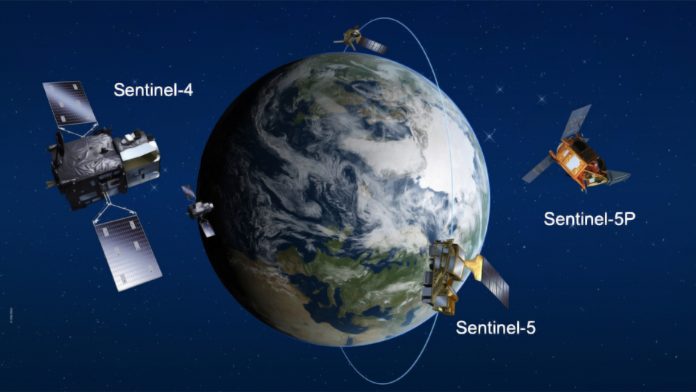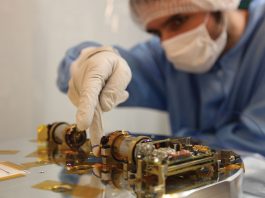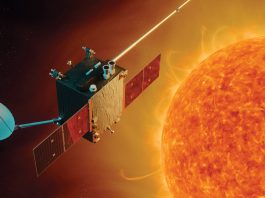Ugo Cortesi, Research Scientist from the Institute of Applied Physics (IFAC) at the National Research Council, Italy, outlines the latest results from the AURORA project.
In response to the European Commission’s 2015 Horizon 2020 Earth Observation call ‘Stimulating wider research use of Copernicus Sentinel Data’ (EO-2-2015), the AURORA (Advanced Ultraviolet Radiation and Ozone Retrieval for Application) began to focus on opportunities that strengthen the outstanding performance expected from the atmospheric Sentinels.1
At the core of AURORA’s work is the investigation of innovative strategies for optimal exploitation of complementary information on the vertical distribution of the atmospheric ozone. This data is then retrieved from measurements acquired at different frequencies and observation geometries by the Sentinel-4 and Sentinel-5 missions of Copernicus.
A major outcome achieved by the project has been the ability to demonstrate the technical feasibility of the novel approach to synergistically use data from multiple independent sources of observations of a given target, based on the sequential operation of data fusion techniques and data assimilation models.
In fact, the AURORA Consortium tested the performance of this new concept by using synthetic ozone products from simulated observations as conducted onboard geostationary (GEO, Sentinel-4) and Low Earth Orbit (LEO, Sentinel-5) in the Ultraviolet (UV), Visible (VIS) and Thermal Infrared (TIR) spectral regions. State-of-the-art radiative transfer models generated simulated measurements based on an atmospheric scenario built from climatological data for four months (April to July 2012).
The assimilation of fused data
Collocated measurements of Sentinel-4, as well as of Sentinel-5, were merged in fused ozone profiles by using the Complete Data Fusion (CDF) method and subsequently fed into ECMWF and KNMI Data Assimilation Systems (DAS). For example, the Integrated Forecasting System in two configurations (i.e., IFS and C-IFS) and the Transport Model version 5 (TM5).2-4
Significant steps forward have been necessary in order to apply the CDF method to the atmospheric Sentinel data in question. As a result, they proved successful in providing fused products of higher quality (i.e. smaller difference from the true value, smaller errors, improved vertical resolution) with respect to the simulated ozone profiles and columns retrieved from Sentinel-4 and Sentinel-5.
Demonstration of the feasibility of the assimilation of fused data was obtained by running a series of seven assimilation experiments, where each of the above-mentioned DASs assimilated incremental amounts of information. The process started from a base run where no data was assimilated, and then proceeded with the assimilation of UV, VIS and TIR LEO data. Then the process fused LEO, followed by fused LEO and fused GEO. The fifth experiment assimilated fused LEO and fused GEO products, along with data from the geostationary air quality missions TEMPO (Tropospheric Emission Monitoring of Pollution) and GEMS (Geostationary Environmental Monitoring Spectrometer), which are planned to fly in constellation with Sentinel-4, over North America and Asia-Pacific.5,6
Finally, the series was closed by the assimilation of fused LEO and GEO products and the assimilation of UV, VIS and TIR LEO and GEO data. Cross-comparisons of the results from a specific couple of experiments aimed to estimate the impact of corresponding set of measurements or of fused products, even though this idea turned out to be applicable only to a limited extent due to the inconsistencies introduced by the use of simulated data together with real data in the assimilation experiments. The consequent degradation prevented the possibility for an appropriate comparative assessment of the assimilated products that remains to this day, one of the key issues to address in desirable follow-ons of the scientific effort of AURORA.
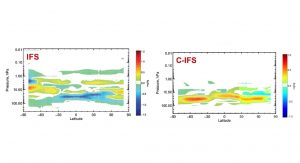
AirPortal and HappySun
At the other extreme of the end-to-end chain representing the scope of the project, from scientific inquiry on the potential of Sentinel-4 and Sentinel-5 data synergy to downstream applications, substantial results emerged from the strong engagement of the SME partners of the Consortium. They went well beyond the original objective of developing pre-market versions of applications and services capable to capitalise on the enhanced quality data on ozone and surface UV radiation derived from the operational ozone products of the atmospheric Sentinels.
On the one hand, the application Airportal, owned and lead by S[&]T in the Netherlands, was conceived as a platform that, starting from satellite data at low spatial resolution, offers insight in air quality at local level and, in particular, in urban areas. AirPortal relies on a sophisticated Air Quality forecasting model combining the background information from space-borne monitoring systems,for example, data from Copernicus Atmospheric Monitoring Service (CAMS), with external sources such as meteorological data, land use information and traffic patterns, to calculate high resolution concentrations of air pollutants (O3, NO2, PM) that are finally calibrated and validated against in situ measurements. The final product is provided in terms of three day forecasts or re-analysis data at high spatial (100m x 100m) and temporal (one hour) resolution for the selected area.
At the beginning of the AURORA project, AirPortal was just an idea and is now currently an operational and commercial service. The AURORA collaboration has been instrumental in this process, with a pilot study implemented during the project on ozone forecasts for Florence, Italy. However, on the other hand, the application HappySun (owned and lead by Flyby Srl in Italy), evolved toward a quality level that makes this solution unique in the global market as a result of the new functionalities gained with AURORA activities. The application addresses the issues of personal UV dosimetry using exclusively information on the UV radiation at the surface retrieved from satellite data.
The new functions introduced in the upgraded version of HappySun included UVB and UVA erythema effective dose monitoring, UVA photo-ageing dose monitoring, along with pre-vitamin D3 dosimeter. In the context of AURORA, multiple use cases related to health for the developed technologies have been identified, and 52 impact aims to utilise those technologies for identified use cases. As part of the significant outcomes of the activities conducted by the AURORA Consortium, it is worth noting that two new companies have been founded: siHealth Ltd and 52impact.7,8 The siHealth start-up promoted the commercial release of the HappySun application in the framework of a strategic alliance with BASF for the personal care market.
References
- http://www.aurora-copernicus.eu
- http://www.aurora-copernicus.eu/data-fusion
- https://www.ecmwf.int/en/research/modelling-and-prediction
- http://tm5.sourceforge.net
- http://tempo.si.edu
- http://gems1.yonsei.ac.kr
- http://www.sihealth.co.uk
- https://www.52impact.nl
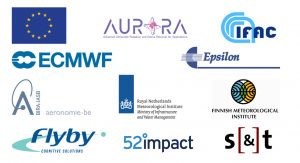
The AURORA project is supported by the Horizon 2020 research and innovation programme of the European Union (Call H2020-EO-2015; Topic EO-2-2015) under Grant Agreement No. 687428
Ugo Cortesi
Research Scientist
IFAC-CNR (Institute for Applied Physics “Nello Carrara”)
+39 055 5226368 / +39 329 182839
u.cortesi@jfac.cnr.it
http://www.ifac.cnr.it
http://www.aurora-copernicus.eu/
Please note, this article will also appear in the second edition of our new quarterly publication.

